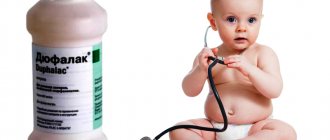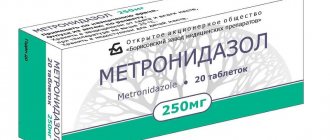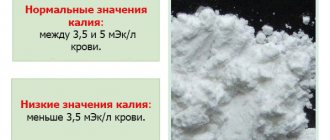Anonymously
Around the clock
Article prepared by an expert
Knoblokh Ekaterina Sergeevna
Leading psychologist. Medical psychologist, full member of the OPPL, emotional-imaginative therapist. More than 10 years of experience working with addicted people in outpatient and inpatient rehabilitation programs.
Read in the article:
- Briefly about the drug MDMA
- Methods of use
- Symptoms and how addiction develops
- Health implications
The danger of the drug MDMA is that there is still no complete picture of the action of the substance in its composition and therefore the process of development of addiction has not been studied. There is an opinion that this drug is safe and not addictive, but why then does it cause harmful effects on health? Read about the features of this drug and the dangers of its use in our article.
What is ecstasy
The chemical name of ecstasy is MDMA or methylenedioxymethamphetamine. This is a compound that affects the human nervous system. It belongs to the amphetamine series and the phenylethylamine group.
Ecstasy is one of the popular semi-synthetic drugs and has various names:
- MDMA (chemical name);
- E;
- X;
- Adam;
- Molly;
- Mandi;
- XTC.
History of origin and release form
Ecstasy is most often available in tablet form, but some users of the drug prefer to take it in powder form. Because it is generally accepted that ecstasy in tablets contains foreign impurities, unlike the powder form. But this has not been proven.
In 1912, in search of a drug to increase blood clotting, the German chemist Anton Kölisch was the first to isolate MDMA. More than 50 years passed before MDMA was remembered as a chemical compound that has an effect on the central nervous system. So in the 50-60s of the 20th century, the US Army, in search of a way to manipulate the consciousness of others, participated in a MDMA research program. This does not give the expected result, so the program is closed.
After this, almost 20 years later, ecstasy began to be actively used in psychiatry, thanks to which it gained fame and began to actively spread, especially in the club sphere.
In 1984, the drug was banned in the USA. Afterwards, other countries followed suit.
At the same time, MDMA became widespread in psychiatry, for the treatment of depressive conditions. This happened because studies have shown that when this substance is consumed, the human brain actively produces the hormone serotonin. It is also called the hormone of happiness. Therefore, it evokes a feeling of happiness and love for everyone around.
However, the spread continued further. The new wave began in 1990. Ecstasy is extremely popular among young people, since when taking this drug the need for sleep disappears and a state of some euphoria appears. Therefore, this drug is most often used at various night parties to this day.
However, according to international statistics, it is known that ecstasy increasingly seized by the police contains various impurities. The most common adulterants are ketamine and methamphetamine .
General information
MDMA abuse is the use of the synthetic psychoactive substance methylenedioxymethamphetamine (ecstasy). Due to the characteristics of its action (increasing empathy, trust and closeness to other people, increasing endurance, reducing the need for sleep), it is very popular among representatives of rave culture. Mostly teenagers and young adults suffer. Representatives of older age groups take ecstasy less often. According to statistics, in 2010, MDMA was used at least once by 0.2-0.6% of the world's inhabitants. The level of ecstasy consumption is especially high in the USA, Europe and Oceania.
MDMA is largely a recreational drug, that is, a psychoactive substance used in the context of certain social relationships (at parties, raves, etc.). Relatively irregular periodic or episodic use predominates. However, MDMA, like any other psychoactive substance, can pose some danger to patients. Depression often occurs a few days after use. There is a high risk of developing life-threatening hyperthermia and hyponatremia within several hours of ingestion. Overdose is possible. Treatment for MDMA addiction is carried out by specialists in the field of addiction.
MDMA abuse
Effect of ecstasy
Ecstasy affects the human central nervous system, thereby altering consciousness.
30 minutes after consumption, the effects of ecstasy begin. After this, the drug begins its maximum effect, which lasts about 60 minutes. In this period:
· Heart rate increases;
· Pupils become wide;
· Blood pressure increases;
· Nausea may occur.
In general, the effect of the substance from the moment it is taken lasts from 3 to 6 hours.
After the end of the effect, the person falls into a depressive state, feels mentally and emotionally exhausted, sleep is lost, and jaw spasms may occur.
Main differences
In addition to the similarity of origin, mechanism of action, effect on the patient’s consciousness, as well as consequences after using MDMA, there are some differences between these two drugs. The difference between ecstasy and MDA is divided into 5 main groups, which are noted by patients who use them:
- The duration of the effect is longer for tenamphetamine, it lasts up to 8-10 hours, while ecstasy acts no more than 4 hours;
- dosage required to achieve drug intoxication. Tenamphetamine has less, 100 mg of the drug is enough to get the effect. In the case of ecstasy, it is enough to take 50 mg of the substance, and then after an hour add another 50% of the first dose. Over time, the body becomes more tolerant to these substances and patients need to increase the amount of substances consumed;
- the visual effects of MDA are expressed quite clearly: hallucinations, strong feelings of past experience or partial elements of it (flashbacks), as well as distortions of time and space are possible. When taking MDMA, such situations occur extremely rarely;
- the state after the end of the drugs is also different. Tenamphetamine is characterized by more severe consequences and severe withdrawal symptoms, since it is a more powerful psychoactive substance. With MDMA these phenomena are easier;
- MDA is more toxic, its breakdown products are retained in the body for a longer period, and it more strongly stimulates the nervous and cardiovascular systems.
Psychological impact during intoxication
Ecstasy use causes the following symptoms:
- A state of euphoria.
- Self-esteem increases, the real assessment of the situation disappears.
- The appearance of a feeling of vigor and relaxation.
- The need for sleep disappears.
- A feeling of harmony and love for others.
- Each person, after use, may experience a feeling of anxiety or fear, but this rarely occurs when using this drug.
- Your mood improves quickly.
- The level of friendliness increases, even towards strangers.
- Libido level increases.
- Psychomotor agitation increases.
If the above symptoms occur, a person urgently needs drug detoxification.
Pharmacology
Pharmacodynamics
MDMA acts primarily as a presynaptic agent releasing serotonin, norepinephrine and dopamine, which is associated with its activity as trace amine associated receptor-1 (TAAR1) and vesicular monoamine transporter-2 (VMAT2).15) MDMA is a substrate of monoamine transporters (DAT, NET and SERT), so it enters monoamine neurons through these neuronal membrane transport proteins;
By acting as a substrate of monoamine transporters, MDMA causes competitive inhibition of reuptake on these neuronal membrane transporters (that is, it competes with endogenous monoamines for reuptake). 16) MDMA inhibits vesicular monoamine transporters (VMATs), the second of which (VMAT2) is widely expressed within monoamine neurons on vesicular membranes.
Once inside a monoamine neuron, MDMA begins to act as a VMAT2 inhibitor and TAAR1 agonist. Inhibition of VMAT2 with MDMA leads to an increase in the concentration of the corresponding neurotransmitters (serotonin, norepinephrine, dopamine) in the cytosol of the monoamine neuron. 17) Activation of TAAR1 with MDMA affects the signaling events of protein kinase A and protein kinase C, which then phosphorylate the associated monoamine transporters - DAT, NET or SERT - neuron.
In turn, these phosphorylated monoamine transporters can either reverse the direction of transport, that is, move neurotransmitters from the cytosol into the synaptic cleft, or withdraw into the neuron, in turn producing neurotransmitter efflux and noncompetitive inhibition of reuptake at neuronal membrane transporters.
In general, MDMA enters monoamine neurons, acting as a substrate for monoamine transporters. MDMA activity on VMAT2 causes the movement of neurotransmitters from synaptic vesicles into the cytosol; 18) MDMA activity on TAAR1 moves neurotransmitters from the cytosol into the synaptic cleft. MDMA also has weak agonist activity at the postsynaptic serotonin 5-HT1 and 5-HT2 receptors, and its more potent metabolite MDA may enhance this effect.
19) A placebo-controlled trial in 15 volunteers found that 100 mg MDMA increased blood oxytocin levels, and the extent of this increase correlated with the perceived sociability-related effects of MDMA.20)(S)-MDMA is more effective in terms of release5 -HT, NE and DA, and (D)-MDMA is generally less potent, and more selective for the release of 5-HT and NE (having only modest potency for DA release).21) MDMA is a ligand on both sigma subtypes -receptors, but its effectiveness on these receptors has not yet been established.
Physiological effects
Ecstasy use causes:
- Decreased need for sleep and rest.
- Heart rate and blood pressure increase.
- Sweating increases.
- A state of dehydration develops.
- Dryness of the mucous membranes of the mouth and throat increases.
- Muscle cramps may occur.
- There is a possibility of an increase in body temperature.
- Nausea and/or loss of appetite.
- Involuntary twitching of the lower jaw.
Overdose
Symptoms of an MDMA overdose can vary greatly. These may include: Cardiovascular system, in severe overdose:
- Generalized thrombohemorrhagic syndrome
- Intracranial hemorrhage
- Severe hypertension or hypotension
CNS, with moderate or minor overdose:
- Abnormal reflex speed
In case of severe overdose:
- Cognitive and memory impairment with potential for retrograde or anterograde amnesia
Musculoskeletal system:
- Acute skeletal muscle necrosis
Respiratory system:
- Acute respiratory distress syndrome
- Urinary system:
- Hyperpyrexia (life-threatening increase in body temperature)
- Hyponatremia (syndrome of inadequate production of antidiuretic hormone)
Side effects during drug intoxication
Since MDMA has not lost its popularity to this day, a large number of drug dealers sell other substances under the guise of ecstasy. One popular substitute for ecstasy is PMA or para-methoxyamphetamine. This substance belongs to a number of amphetamines and is similar in action to MDMA. The danger with this substitution is that PMA does not work as quickly as ecstasy. This leads to the fact that people, not quickly receiving the desired effect, prefer to take an additional dose. And since PMA is very toxic, it leads to death. In addition, under the guise of ecstasy, they can sell LSD, cocaine , heroin, and some caffeine and even rat poison.
Solution
Almost all drug addicts fear universal condemnation, and therefore decide to purify their blood and urine at home, thus removing the remnants of psychoactive drugs from their bodies. This option cannot be called the best, because an enema or taking sorbents is not able to effectively and quickly remove toxins. The only thing they provide is a general improvement in the patient’s condition.
- If the addiction is not long-term, and the body is still strong, it is necessary to drink more liquid during the day (provided that there are no diseases of the urinary system). Boiled or filtered water should be drunk up to 2 liters daily.
- The diet should be composed so that it contains hot first courses.
- Consuming fruit or vegetable juices will help restore vitamin deficiencies.
- The menu includes unsaturated acids that restore strength, condition the skin and hair, and improve overall well-being. These can be nuts, flax and pumpkin seeds, red fish. In addition, they normalize digestion.
- It is recommended to eliminate sugar, coffee and honey from the addict’s menu. Caffeine accelerates the breakdown of nutrients absorbed through food. You also can’t overload your body with carbohydrates.
- It is necessary to consume dairy products more often, as they are considered an excellent detoxifier.
- Physical activity should be introduced. During classes, the body is cleansed through the sweat glands and skin. A drug addict cannot immediately exhaust himself with strong training. The load should be increased gradually so as not to undermine the already exhausted body.
After just a couple of days of eating like this and staying hydrated, the drug addict will begin to feel much better. However, treatment at home should be continued even after you feel better for up to 7 days. Clear signs of decreased intoxication are improved appetite and increased urine output.
It should be noted that saunas and steam baths have little effect on drug addicts as a method of cleansing the body. Of course, the procedure activates the therapy process and for some time distracts the attention of the addicted to the consumption of a harmful substance. It should be understood that visiting a bathhouse puts stress on the heart and blood vessels. This leads to pathological changes, especially if thermal procedures are prohibited for a person.
Negative effects of ecstasy on the body
- Anxiety/psychosis is not usually common with ecstasy use, but may occur in some cases.
- A rapid heart rate and high blood pressure increase the burden on the user's body and, if used regularly, can lead to the development of cardiovascular disease and stroke.
- An increase in body temperature to high levels can lead to death.
- Blood electrolyte imbalance . When using ecstasy, the body becomes dehydrated, which disrupts the electrolyte balance of the blood. Because of this, fluid can accumulate in the brain, convulsions may develop up to the point of loss of consciousness, heart rhythm may be disrupted and, in the worst case, lead to death.
- Serotonin syndrome . There is also a risk of developing the so-called “serotonin syndrome”. Since taking ecstasy causes excessive production of serotonin in the brain, this can lead to confusion, dilated pupils, headaches, anxiety, excessive sweating, tremors of the limbs, and involuntary movements resembling seizures.
The syndrome can be fatal. The risk of death increases if a person takes ecstasy in combination with other substances that can increase serotonin levels. If a person experiences at least one of the above symptoms, they should urgently seek medical help to save the person’s life.
How professional detoxification occurs - its types and features
If there are still traces of drugs in your blood and urine, you should seek professional help. Modern clinics carry out various detoxification procedures, the choice of which will depend on the general condition of the patient.
Thus, there are the following types of drug withdrawal:
- Cleaning is classic. This detox is suitable for any type of drug addiction (with the exception of opium). It is carried out in several stages and can take from several days to a week. This method involves the use of droppers with special medications. Helps not only remove all traces of dangerous substances, but also relieve withdrawal symptoms.
- UBOD – this procedure is an accelerated opioid detoxification. This procedure is indicated in the presence of opium addiction.
- Hemosorption and plasmapheresis procedures. They are used in cases of overdose, when kidney and liver failure occurs. The main essence of this method is to pass the patient’s blood through a special device, which cleans it with a sorbent filter from toxic plasma.
All these procedures will allow you to quickly cleanse your body of traces of drugs. This or that technique can only be prescribed by a professional narcologist after a thorough examination of the patient.
Consequences of long-term use
- Addiction . If a person uses ecstasy frequently, this may lead to a need to use the drug constantly. It is extremely difficult to get rid of addiction.
- Psychological problems . Since ecstasy affects the functioning of the central nervous system, a person who uses this drug frequently and/or for a long period develops psychological problems. We are primarily talking about depression, anxiety and sleep disturbances.
- Poor mood/increased anxiety . Serotonin is produced in the brain. This substance “forces” people to be in a good mood. Studies have shown that ecstasy use increases serotonin levels in the brain. Accordingly, with frequent drug use, the body’s ability to produce this substance is depleted; over time, without drug use, a person is in a bad mood.
- Possible risk of brain damage . A number of animal studies have shown that experimental animals exposed to ecstasy develop brain damage.
- Changes in the brain . Brain scans of people who use ecstasy chronically show that there are different chemical changes in the brain. Some of these changes, however, may go away if you stop using the drug. There is evidence to suggest that some of these changes will disappear 200 days after a person stops using ecstasy. However, if overused, some changes may be permanent.
How long does it take for drugs to leave the body?
| Type of drug | One-time dose | Long-term use |
| Psychostimulants | ||
| Cocaine | 4 days | 3 weeks |
| Amphetamine | 2-3 days | 3-6 months |
| Methamphetamine | 2 days | 3-6 months |
| Ecstasy (MDMA) | 2-3 days | 7 days |
| Opiates | ||
| Morphine/Codeine | 24 hours | 3-4 days |
| Heroin | 2 days | 2 weeks |
| Codeine glucuronide | 3 days | 2 weeks |
| Morphine glucuronide | 2 days | 2 weeks |
| Buprenorphine | 48-56 hours | — |
| Buprenophrine compounds | 7 days | — |
| Methadone | 7-9 days | 3-4 weeks |
| Propoxyphene/norpropoxyphene | 6-48 hours | — |
| Barbiturates | ||
| Phenobarbital | 7 days | 1-2 weeks |
| Pentobarbital | 2-3 days | 1-2 weeks |
| Cyclobarbital | 24 hours | 1-2 weeks |
| Cannabinoids | ||
| Marijuana, hashish | 5-8 days | 2 months |
| Benzodiazepine derivatives | ||
| Nitrazepam, Diazepam | 7 days | 1-12 months |
| Chlordiazepoxide, Temazepam | 40-80 hours | 1-12 months |
| Triazolam | 24 hours | 1-12 months |
| Other | ||
| LSD | 24 hours | 5 days |
| Methaqualone | 7 days | — |
| Phencyclidine | 8 days | — |
Available in the form of strips or plates (cassettes). The test is processed with antibodies that react to certain types of drugs. If there are psychotropic substances in the urine, the indicator strip or cassette changes color.
Household rapid drug test sold in a pharmacy
How to use a rapid urine drug test:
- Immerse the strip or cassette in the container with urine up to the special mark.
- Leave for 1-2 minutes.
- Take out the dough and put it in a dry place for 15-20 minutes.
The advantages of this type of drug testing:
- Low price (from 100 to 1500 rubles)
- Possibility to buy at the pharmacy
- Quick results (in about 15-20 minutes)
- Easy to use at home
Minuses:
- This type of drug test does not detect all psychotropic substances. Thus, using express diagnostics, it is difficult to detect designer drugs (the pharmaceutical industry does not keep up with the emergence of new formulas of synthetic compounds), barbiturates (due to the large number of different drugs, the creation of a single indicator is impossible).
- It will not be possible to find out the exact concentration of the drug in the body and how long ago it was used. This can be judged only indirectly by the brightness of the indicator's hue (the intensity of the color indicates a large dose and recent use of a psychotropic substance).
Doctors consider a chemical-toxicological study to be a more reliable method of detecting drugs in urine: in modern laboratories, urine is checked with electronic analyzers.
Professional urine testing provides more accurate results
Pros:
- Detection of any narcotic drugs
- Establishing accurate indicators of the concentration of psychotropic substances in the body
Minuses:
- Results are not known immediately (3-7 days)
- The cost is higher than that of household urine drug tests (from 3,000 to 7,000 rubles)
Anyone who is thinking about how to quit drugs is interested in how quickly they “leave” the body. Experts note that any type of narcotic drug destabilizes the functioning of organs and leaves negative consequences. The release time of the drug is influenced by several conditions:
- type of drug;
- person's weight;
- dose level used;
- individual characteristics of the metabolic process;
- general health;
- duration of dependence and frequency of taking illicit drugs.
Each of these parameters determines the individuality of the human body’s reaction to the drug used.
The drug has been known since the 70s of the last century. Initially used by psychotherapists to eliminate depression, aggression, improve mood and sleep in patients. But they soon found out that the harm was much higher, and the first cases of addiction and overdose were identified. Treatment with MDMA was stopped and banned.
When using the drug, a person experiences a feeling of lightness and a surge of energy. The sensitivity of pleasure receptors is heightened.
No one controls the production of the drug, so the composition varies in clandestine laboratories. It is the presence of certain components that poses a threat to human health, is harmful and causes addiction.
The most popular fillers:
- Starch.
- Sucrose.
- Fructose.
- Soda.
- Aspirin.
- Paracetamol.
- Quinine.
- Piperonylacetone.
- Isosafrole.
- Safrole.
- Caffeine and some substances from the amphetamine group or ammonia derivatives.
Very often you can find a fake. Poison and psychotropic substances are added to the original substance. This is especially dangerous to health, and the drug loses its properties.
Helpful information
Find out:
- heroin and opiates act on the human psyche, and what symptoms they cause.
- Why cocaine and crack are illegal, and how quickly these substances become addictive.
- What does drug abuse and is drug addiction treatable?
- Where can you get emergency help for a drug overdose at home and in a clinic?
- How is the body detoxified from drugs and how many procedures may be required for this.
MDMA synthesis
The starting material for the synthesis is safrole or isosafrole. It is produced using two common methods: oxidation of isosafrole in an acidic environment or reduction. In addition, vanillin, pyrocatechol and similar substances can act as a precursor.
The synthesis of MDMA is simple and does not require special equipment, which is why illegal production is widespread. Some chemists repeat the synthesis at home and obtain their own drug, similar in properties to the drug.
- Behavior of a drug addict: how to identify addiction?
- Chewing tobacco snus CHN – harm to the body and health, how to determine use || Consequences of using snus










